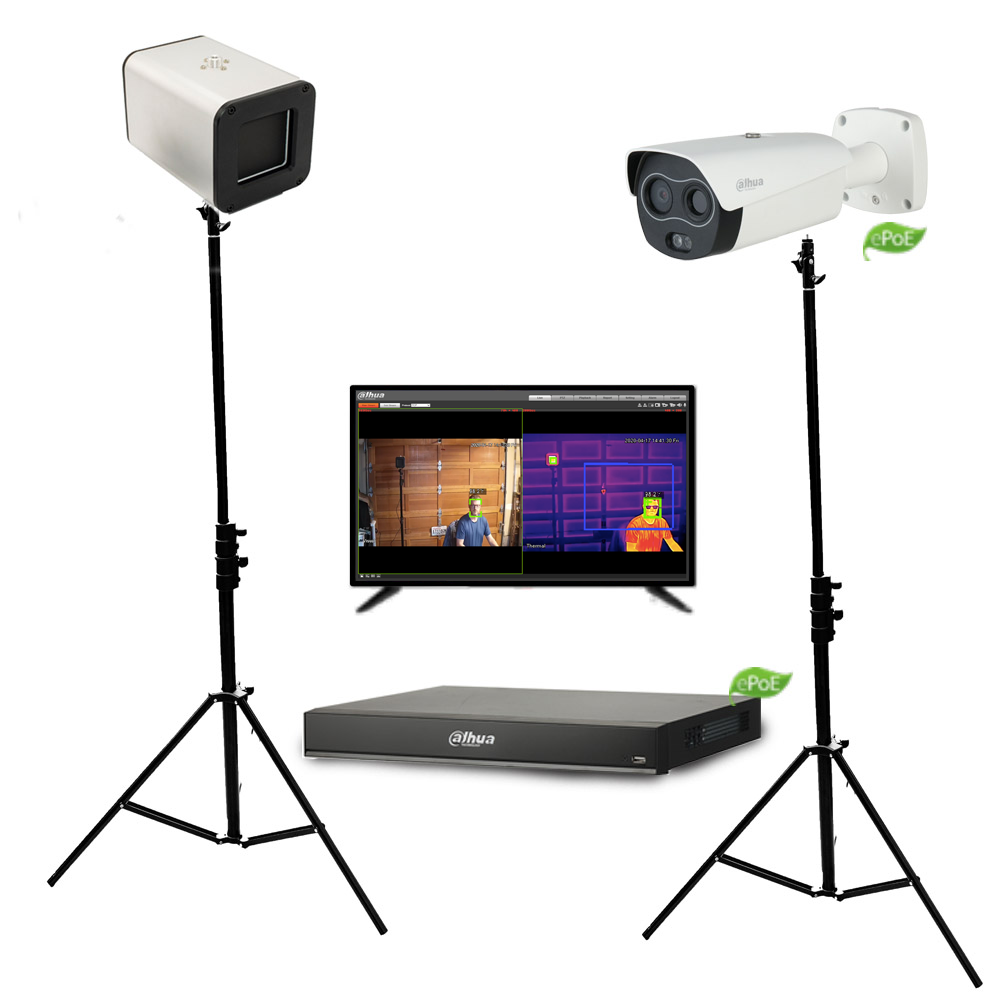DAHUA
Thermal Cameras
A thermal camera capture and create an image of an object by using infrared radiation emitted from the object in a process that is called thermal imaging. The created image represents the temperature of the object. The underlying technology of the thermal imaging cameras was first developed for the military.
Both infrared radiation and visible light are part of the electromagnetic spectrum, but unlike the visible light, Infrared radiation cannot be perceived with human eyes directly. Which explains why a thermal camera is not affected by the light and it can give a clear picture of an object even in a dark environment.
Thermal imaging is all about converting that infrared light into electric signals and creating an image using that information.
This technology was revolutionary at the time, but it is in common use today. But, how do these devices manage to capture this invisible visual information?
The common standard today for thermal camera is showing warmer, objects with a yellow-orange hue that gets brighter as the object gets hotter. Colder objects are displayed with a blue or purple color.
Infrared energy has a wavelength starting at approximately 700 nanometers and extends to approximately 1mm. Wavelengths shorter than this begin to be visible by the naked eye. Thermal imaging cameras use this infrared energy to create thermal images. The lens of the camera focuses the infrared energy onto a set of detectors that then create a detailed pattern called thermogram. The thermogram is then converted to electrical signals to create a thermal image that we can see and interpret.

300 x 400 Thermal Sensor and a 2MP CMOS Sensor
The Hybrid Thermal Network camera combines an uncooled VOx 300 x 400 thermal sensor with a 2 MP visible-light sensor for cost-effective, long-range surveillance in a rugged all-in-one package. The thermal imager coupled with an athermalized, focus-free lens produces crisp images in total darkness and sees through rain, fog, and snow. The visible sensor with an IR illuminator delivers superior video in any lighting condition.
Thermal Camera
- 300 x 400 VOx Uncooled Thermal Sensor Technology
- Athermalized Lens, Focus-free
- 13 mm Fixed Thermal Lens
- ≤ 40 mK Thermal Sensitivity
Visible-light Camera
- 1/2.8-in. 2 MP Progressive-scan CMOS Sensor
- 8 mm Fixed Lens
- Maximum IR Distance 35 m (114 ft)
System Features
- Active Alarm
- Supports ROI, Motion Detection, and Color Palettes
- Enhanced Power and Data Transmission Distances (ePoE)
- IP67 Ingress Protection
- Main Features
- Support ROI, Motion Detection, and Color Palettes
- Enhanced Power and Data Transmission Distances (ePoE)
- IP67 Ingress Protection
Thermal Temperature Monitoring Solution

Required Components
- DH-TPC-BF5421-T Thermal Hybrid Network Camera
- JQ-D70Z Blackbody
- DHI-NVR5216-16P-I 16-channel NVR
Recommended Accessories
- VCT-999 Tripod (x2)
- RQW026-00 Brackets (x2)
- DHL43-F600 Full HD Monitor
Solution Features
- Safe, Efficient, and Accurate Temperature Monitoring
- ±0.3° C (±0.54° F) Temperature Measurement (with blackbody)
- Long-distance Rapid Screening at up to 4.50 m (15.0 ft), Monitoring 30 People per Second
- Enhanced Power and Data Transmission Distances (ePoE)
- Recommended Use in Commercial Buildings, Healthcare Facilities, Airports, Metro Stations, and Public Gathering Locations
- Main Feature
- Safe, Efficient, and Accurate Temperature Monitoring
- Enhanced Power and Data Transmission Distances (ePoE)
- Recommended Use in Commercial Buildings, Healthcare Facilities, Airports, Metro Stations, and Public Gathering Locations

